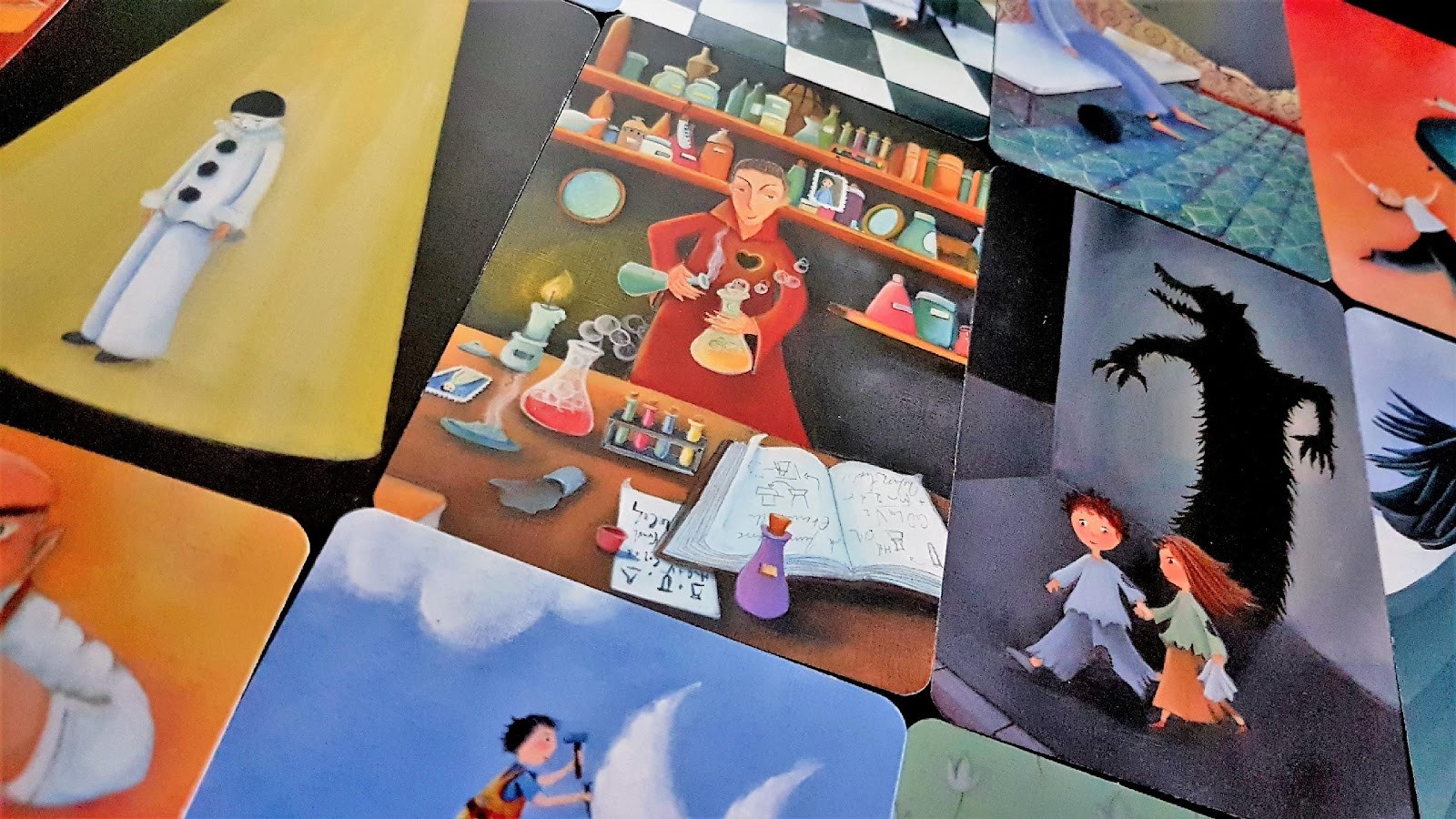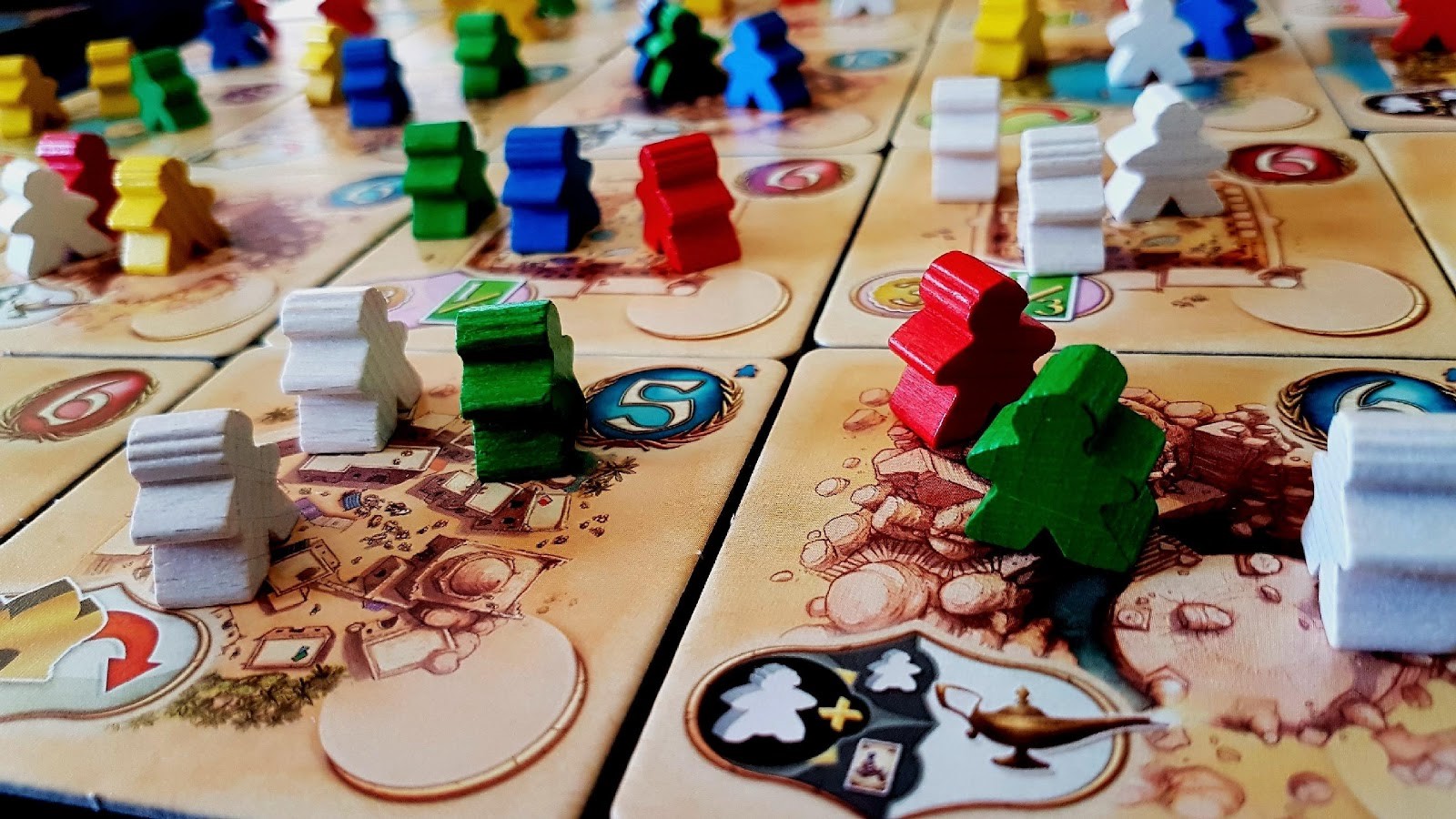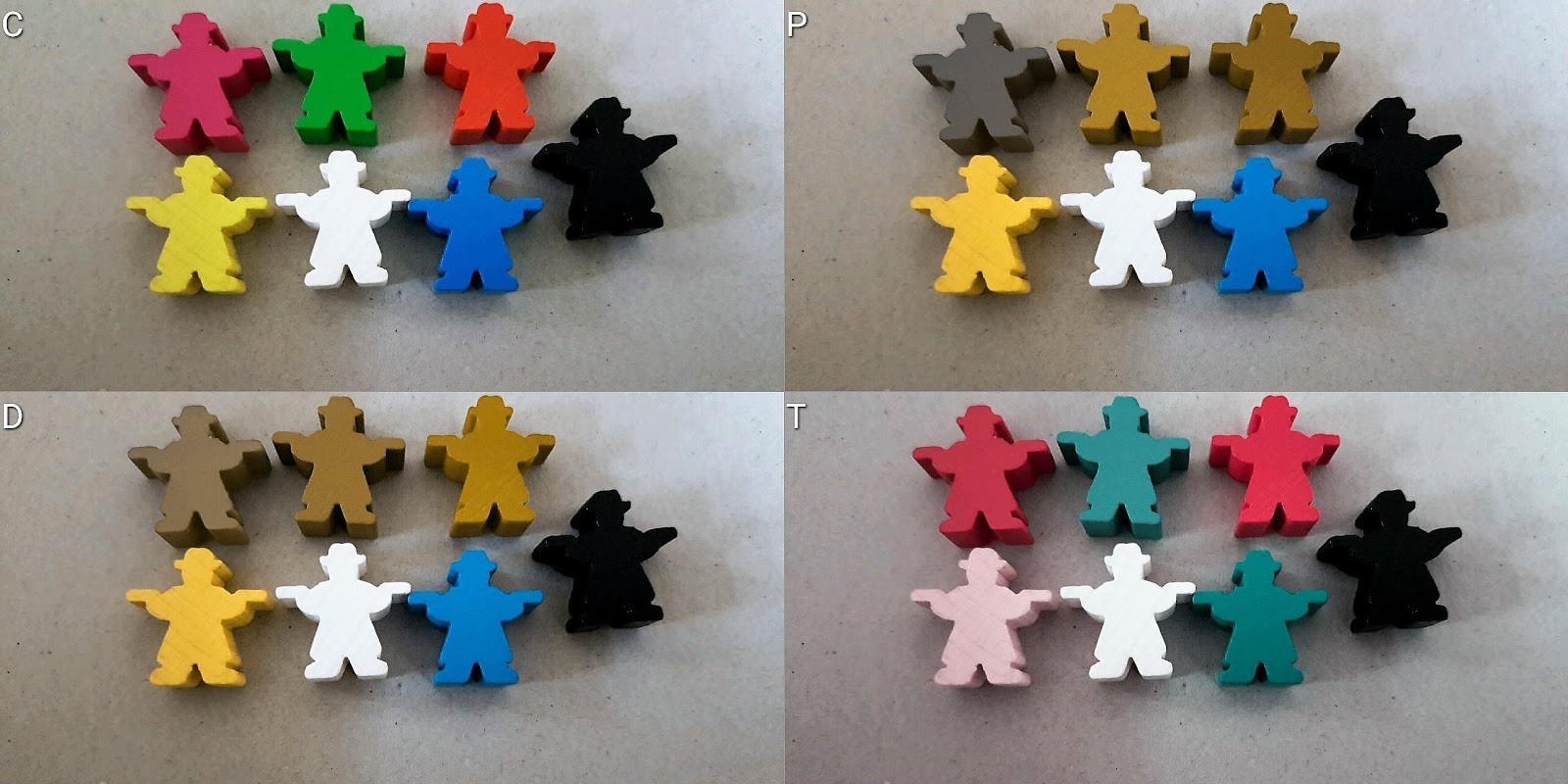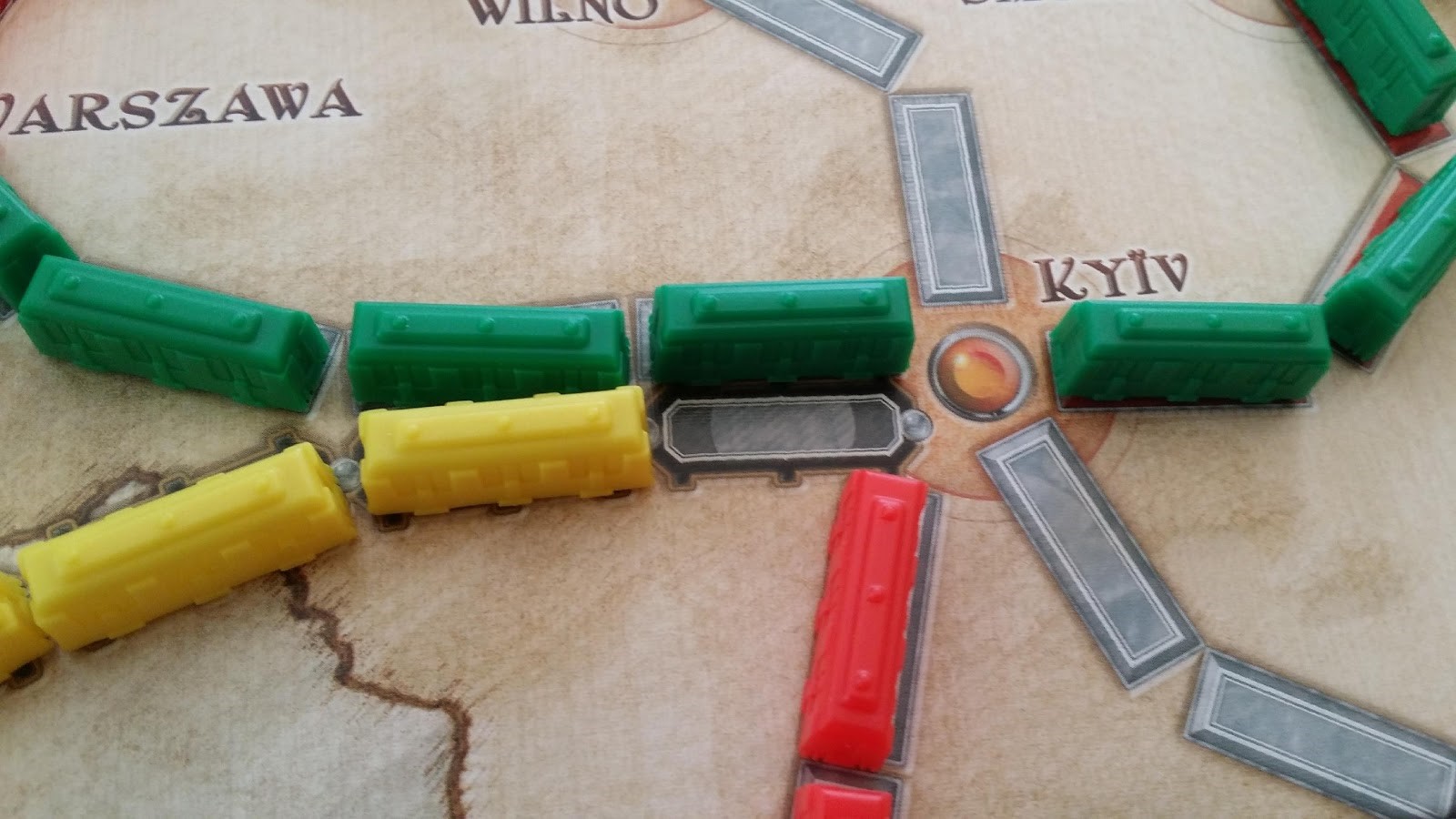It’s almost time again for the Spiel des Jahres – it’s the closest thing we have to Oscars for board games. What I’d like to take this guest post opportunity to do is talk about the role the Spiel des Jahres can play in helping ensuring our hobby becomes as inclusive as it possibly can be.
The various categories of the Spiel des Jahres are important. You know that already otherwise you wouldn’t be here reading this article. The awards, and their nominees, are an intense subject of speculation amongst board-game connoisseurs the world over. There are real cultural and economic rewards that come from being nominated, and greater rewards still for the games that win. More than anything else, what success in this respect implies is accessibility in various senses of the word. A winner will be mechanistically accessible to those that play – you won’t need to be an expert to understand or excel. A winner will be economically accessible to those that look to purchase it – it won’t be eye-wateringly expensive and full of luxury plastics. It will be logistically accessible to people across the world – it’s a game you’ll find in German supermarkets and anywhere they sell hobbyist games. Winning one of the Spiel des Jahres awards means the public removal of a number of barriers that may have previously stood between a game and genuinely mainstream success and recognition.

Figure 1 –The whimsical and charming Dixit – one of the best games in my experience for introducing new players to the world of modern board-gaming.
However, there is another meaning to the word ‘accessible’ that is often under-emphasised in our hobby. That is in terms of accessibility to gamers with disabilities. There is a huge, largely untapped market of gamers out there who find their enjoyment of games complicated by the lack of support for physical, visual, communicative or cognitive impairments. For these gamers, sometimes all the Spiel des Jahres award does is emphasise that their participation in board gaming culture can only ever be partial. There are few things as culturally isolating as being unable to join in on the fun everyone else seems to be having.
In some respects, this is only to be expected. To make complex economic management mechanisms accessible to players with cognitive impairments would need so much to change that it wouldn’t in any sense be the same game. Dexterity games will never be a good fit for those with physical impairments. Pattern matching games are rarely a good choice for people with visual impairments. That is undeniable. It’s also perhaps undesirable that this change – the inaccessibility in a game is where all the fun comes from and we need to be careful about agitating for ‘less fun’ in games. The golden age that we are currently experiencing with regards to board gaming is one that is fuelled by a glorious variety of themes and mechanisms. That can only work if game designers are free to explore innovative and adventurous designs and to find the fun within.

Figure 2 – Five Tribes has a number of problems with regards to colour blindness, but there are elements of its fundamental design cannot realistically be made more accessible without it being a very different game. Some problems can be fixed, some cannot.
It is not the case that every game can be made accessible to every gamer. However, it is usually the case that every game can be made more accessible than it currently is. The spectrum of interaction within which individual players may be functioning is extremely wide. The distance between someone being able to play, and being completely unable to play might only be as wide as a few centimetres of die cutting, or a few shades on the artist’s palette. Greater accessibility is not only within relatively easy grasp of all developers, it’s something that can only increase the potential audience for these remarkable games. Awards like those offered by the Spiel judges will give a publisher a generous slice of the market pie, but accessibility means that the pie will be bigger for everyone. I would very much like to see the Spiel des Jahres incorporating elements of accessibility in its judging processes as a result. There are a few areas of maximum leverage in board gaming – this is one of them.

Figure 3 – Here we see some custom meeple designs as viewed by those with full chromatic vision (top left), Protanopia (red-green colour blindness), Deuteranopia (a different kind of red-green colour blindness) and Tritanopia (blue-yellow colour blindness). Other than the colour, there is no way to tell them apart.
For a little context, I’m a computing lecturer in Aberdeen, Scotland. I’m not associated with the Spiel des Jahres in any capacity other than as an interested observer. As part of my academic work in the area of accessibility for games, I run a blog called Meeple Like Us. We do the same kind of reviews that are produced by many people who are enthusiasts in the area. Our unique element is for every review we also publish a comprehensive accessibility analysis of the game we just discussed. We assess games in terms of the impairments we have mentioned above, but also in terms of likely emotional impact and socioeconomic factors of representation. Our job is to help gamers with special access requirements to find the games that work for them, and highlight the problems that mean certain titles won’t be suitable. I have had a lot of feedback showing that there really is an appetite out there for accessibility issues to be considered in mainstream tabletop gaming. The Spiel des Jahres awards have certain restrictions that go along with them, such as ‘must have been published as a German language edition’. That’s an accessibility requirement. There’s room in this reward for much more to be encouraged.
I won’t single out any particular games here for commentary because that would be neither helpful nor fair. If there is one thing I have learned during this process it’s that even games that look and play in a similar fashion often diverge completely in their accessibility profiles. I’m often as surprised as anyone by what an accessibility teardown ends up revealing. As such, there are no ‘representative’ games that can stand in for the whole. The images selected for this post have been chosen largely at random from the games we have previously covered on the website.

Figure 4 – For those with physical impairments, attempting to position trains in tight quarters can be difficult. Ease of verbalisation really helps with situations like this.
The results of the project so far have shown that overall the story regarding the accessibility of board games is far from positive. However, and this is more important, it’s also shown that there are a lot of easy fixes that can really make a difference. For a few simple examples:
- Try to avoid paper money – it is rarely accessible to those with physical or visual impairments. The usual compensatory strategies people have for real life paper money (such as the folding method) don’t function correctly in the rapid churn of a game economy.
- When using cardboard tokens, give different units tactile distinctiveness. Don’t just change the size, change the shape. Go from circle, to hexagon, to square, to crescent. That makes it possible to tell the difference by touch alone. Currency of indistinguishable denominations is not visually accessible. Look at the coins in your pocket as a model for how tokens should be handled. If tokens have to be hidden, provide a screen, or a bag, or just tell people to keep them hidden in a cup.
- Consider colour blindness – not just in terms of colour palette, which is only a partial solution. Make sure colour isn’t the only way you’re providing key information to players. Supplement it with iconography, or textures. Be aware there is a wide spectrum of colour blindness – it’s not just about picking the right colours, although that certainly helps.
- Consider how easy it is to describe an action a player might undertake. Even gamers that are completely unable to interact with a game can still fully enjoy it. We refer to ‘verbalisation’ in our teardowns to describe this. You can play a meaningful game of chess without ever touching a piece, simply by making use of the unambiguous grid referencing system of the board.
- Consider whether your rules can be made more modular, so that additional complexity can be slotted in to place as time goes by. This allows not only an easier learning experience for everyone, but for groups to find the sweet-spot where the cognitive abilities of players are neatly accommodated.
- If you can avoid using custom dice, consider alternate options. Visually impaired players will often have specialised braille or oversized dice they use and these often cannot easily be incorporated without the use of a lookup table or some other awkward compensation.
None of these are hugely costly, although an adventurous publisher might also consider things like QR codes linking to audio narration for long passages of text; embossed boards that lend themselves to tactile exploration; or any number of other compensations. Some manufacturers have seen ‘accessible components’ as a business opportunity all of their own. I would like to see the floor raised here without incurring additional expense to those that are currently excluded from full participation in the hobby. There is a lot we can do to make games more accessible as they emerge out of the box.

Figure 5 – This is an oversized, accessible six sided dice. It’s sitting atop one of the casino tiles from Lords of Vegas. Even if you had enough of these dice in your house, you couldn’t use them to stand in for the ones in the box because of how they’re used.
The important thing here is that it’s not necessary to solve every problem for every game – but every problem you do solve will open the game up to an audience that was previously unavailable. Board gaming is not currently considered a mainstream hobby for those with disabilities, but that can change. It changes in part by showing disabled gamers that this is a hobby they too can meaningfully enjoy, and making the design and production changes that permit them to do so. The economic rewards that come from the SdJ could be a powerful incentive for this.
It’s important to note here too that there is also a social and cultural aspect to accessibility. The attitudes people have towards recreational products are very often shaped by the way in which those products are presented. Adopting wider diversity in art in terms of ethnicity, gender and disabilities is a powerful gesture. It sends a message to those that idly encounter the games – ‘we see you as part of this hobby’. That message in turn indicates that people should consider seeing themselves as part of the hobby. We include new audiences first by ensuring they can play, and then ensuring they feel welcome in these marvellous shared experiences.
A short treatment of this subject cannot possibly hope to be exhaustive in the possibilities or the problems, but all I’m looking to do here is float a notion. We spend a lot of time talking about the SdJ and that alone shows how potentially powerful a catalyst for change it could be if accessibility was one of the judging criteria.
Those wishing to learn more about the issue are invited to join me back on Meeple Like Us where we do weekly deep dives into particular games – including a number of previous SdJ winners and nominees. I am also contactable at dice@imaginary-realities.com for discussion, but I can’t guarantee especially rapid responses there. I’m available on twitter at @meeplelikeus, and I’m very happy to engage with designers and publishers.
Thanks for your attention. We play games for many reasons, but one of the most powerful is to spend quality time with the people we love. The more accessible your games are, the greater the number of our loved ones that can be part of the experience.